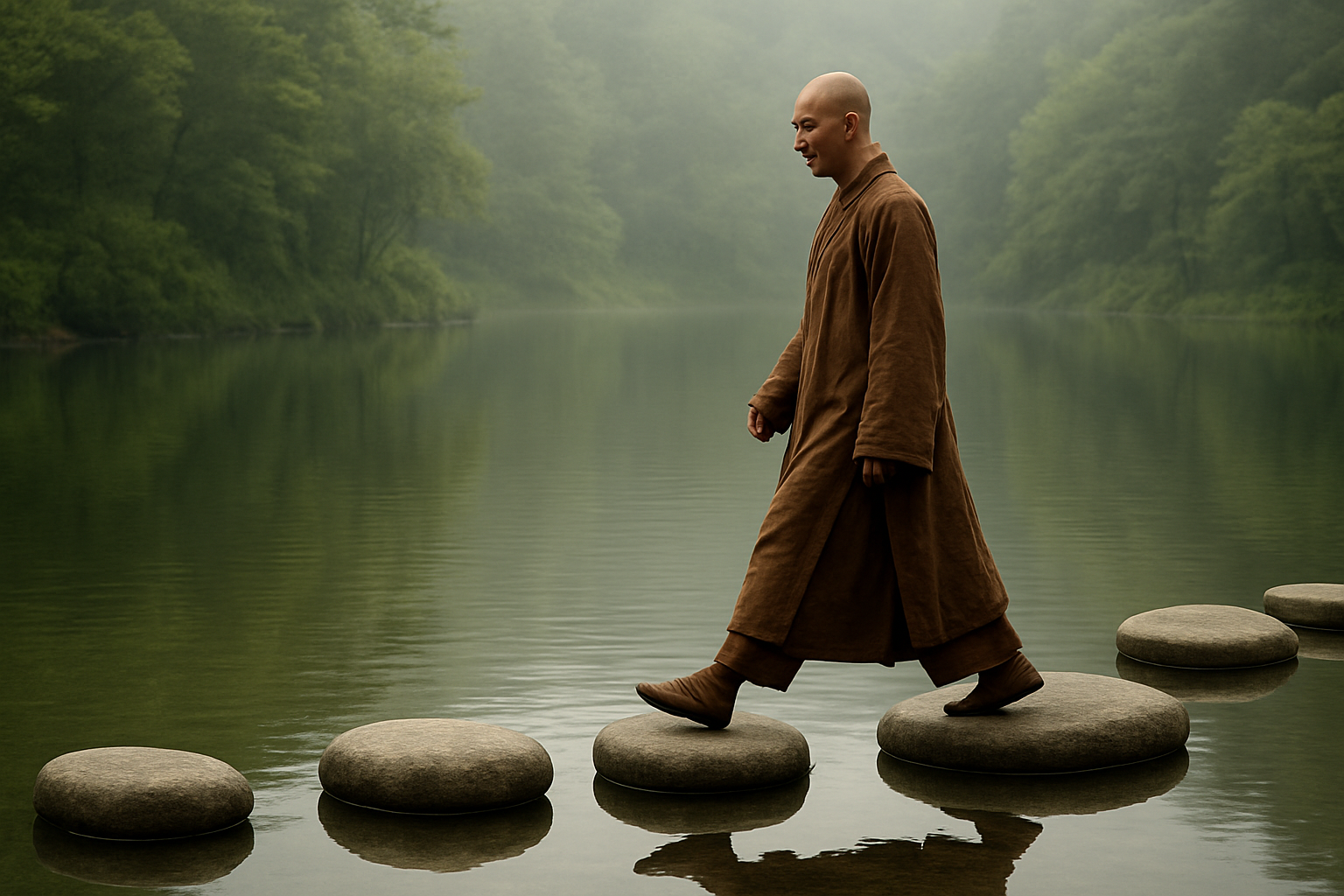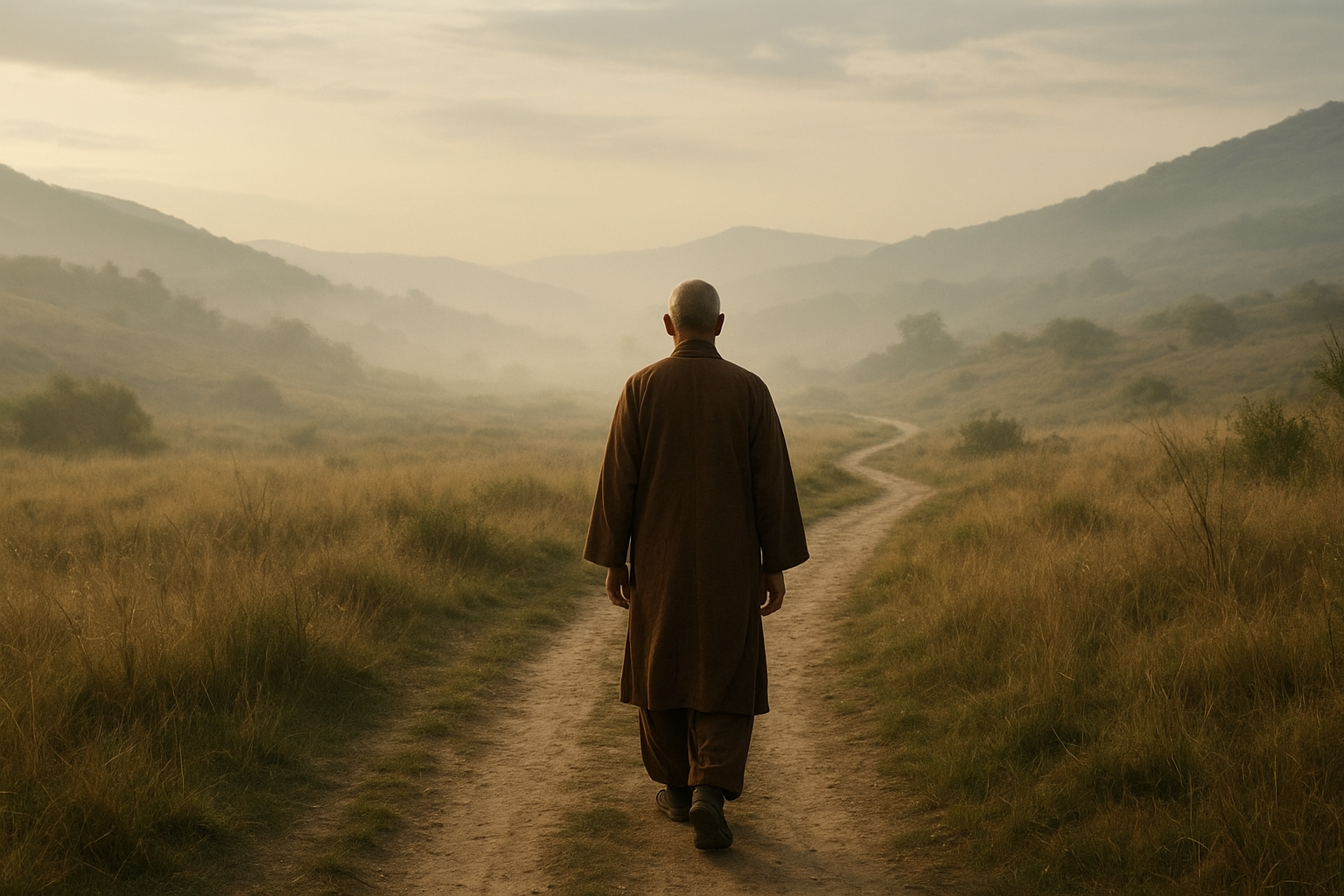One Step, Infinite Journey – The Zen of Every Movement
The essence of Zen often defies logical reasoning and verbal explanation, yet it profoundly permeates every movement and breath. In the words of Zen master Thich Nhat Hanh, “Walk as if you are kissing the Earth with your feet.” This simple act of walking, seen through the Zen lens, transforms into a profound journey of enlightenment.
The Philosophy of Zen in Everyday Life
Zen Buddhism emphasizes mindfulness and experiencing the present moment without distraction. It invites us to engage fully with every task and step we take. In this practice, every movement becomes purposeful and sacred, encapsulating the infinite possibilities within the framework of the here and now.
“Life is available only in the present moment. If you abandon the present moment, you cannot live the moments of your daily life deeply.” — Thich Nhat Hanh
The Journey Begins with a Single Step
In the Zen practice of walking meditation or kinhin, practitioners focus intensely on the act of walking. Each step becomes an expression of concentration and mindfulness. The rhythm of walking aligns with breathing, creating a state of unified awareness between body and mind. This practice illustrates the Zen teaching that the journey’s essence is to reside wholly in each action, however simple it may seem.
The Infinite Potential of Every Step
In his work The Way of Zen, Alan Watts elucidates, “The journey of a thousand miles begins with a single step.” This Zen-inspired wisdom highlights not just the beginning of any journey but emphasizes the value found in each individual step. Within that moment, the universe unfolds with endless potential, as each step is both complete in itself and a part of a broader continuum.
Modern Applications of Zen Movement
In today’s fast-paced world, mindfulness practices including Zen movements, offer an antidote to stress and distraction. Whether it’s through yoga, tai chi, or simple walking meditations, integrating mindful movement into daily routines can foster deeper awareness and relaxation.
- Yoga: With its foundation in mindfulness and breath, yoga offers a path to integrate physical movement with Zen principles, enhancing physical and mental well-being.
- Tai Chi: This gentle martial art, often described as “meditation in motion,” draws heavily on Zen concepts to cultivate balance, awareness, and inner peace.
- Mindful Walking: Practiced anywhere, mindful walking allows individuals to harness the Zen power of each step, promoting clarity and groundedness.
Embracing the Zen of Movement in Daily Life
The teachings of Zen remind us that life’s most transformative experiences occur within the simplicity of everyday actions. It’s essential to cultivate an awareness that respects each moment as a contributing factor to the journey of life. As we embrace the Zen of every movement, each step—each breath—becomes more than mere actions; they are extensions of our inner essence reaching out to connect harmoniously with the world around us.
In conclusion, the Zen of every movement teaches us to savor life’s journey, explore the infinite potential of each moment, and approach every step with mindfulness and intention. In doing so, both our bodies and spirits are nourished by the present, allowing us to walk our path with greater wisdom and peace.



